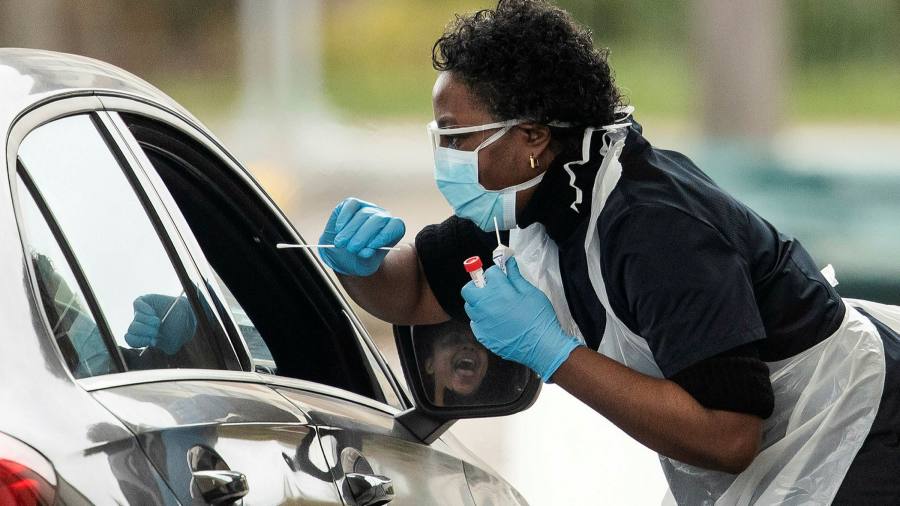[ad_1]
England’s test and trace programme failed to make a “measurable difference†to the spread of the pandemic despite an outlay of £23bn, an “unimaginable†level of expenditure, a parliamentary spending watchdog has claimed.
Meg Hillier, chairman of the House of Commons public accounts committee, said the test and trace programme had cost the equivalent to the annual budget of the Department for Transport.
British taxpayers “cannot be treated by government like an ATM machineâ€, she said. “We need to see a clear plan and costs better controlled.â€
In May last year, Boris Johnson, UK prime minister, told MPs that a “world-beating†test and trace scheme would be in place by June 1 2020. However, the programme was beset with problems, such as long test turnround times and delays in reaching contacts of infected people.
The initial lockdown last spring was followed by further orders to stay at home in the autumn and winter. Hiller said the test and trace programme was supposed to have avoided the need for further lockdowns but added that this “promise†had been “broken, twiceâ€.
Although £23bn has been spent, the test and trace programme has been allocated a total of £37bn over two years. The committee said the scheme must now “wean itself off its persistent reliance on consultants†paid up to £6,600 a day and demonstrate “the worth and value of this staggering investment of taxpayers’ moneyâ€.
In early February NHS Test&Trace said it was still employing around 2,500 consultants, at an estimated average daily rate of around £1,100, with £6,624 the highest daily rate paid. “It is concerning that the [health department] is still paying such amounts — which it considers to be ‘very competitive rates’ — to so many consultants,†the committee added.Â
The MPs pointed to the scale of the programme, run by Lady Dido Harding, former chief executive of the telecoms company TalkTalk. From its inception in May until January this year, daily UK testing capacity for Covid had increased from around 100,000 to over 800,000 tests. NHS Test&Trace had also contacted more than 2.5m people testing positive for Covid-19 in England and advised more than 4.5m contacts to self-isolate.Â
Yet fewer than 65 per cent of this total laboratory testing capacity had been used in November and December. Even with this spare capacity, test and trace had never met the prime minister’s commitment to turn around all tests in face-to-face settings in 24 hours — a goal he had said would be met by the end of June.
The programme needed to strike a better balance between “meeting surges in demand . . . and not paying unnecessarily for surplus capacityâ€, the MPs added.Â
The PAC also questioned the decision to allocate a further £7bn to the programme in December, on top of £3bn already budgeted, to roll out rapid tests for use in schools and workplaces, despite questions over their accuracy.
Ian Hudspeth, who chairs the Local Government Association’s community wellbeing board, said councils across the country had set up more than 300 local contact-tracing partnerships, complementing the national system by successfully tracing many hard-to-reach cases.
Involving councils at an earlier stage “could have led to a more swift and effective test and trace systemâ€, he added.
Test and trace programme head Harding said in response to the report: “Protecting communities and saving lives is always our first priority and every pound spent is contributing towards our efforts to keep people safe — with 80 per cent of NHS Test and Trace’s budget spent on buying and carrying out coronavirus tests.â€
After building a testing system from scratch, it had now carried out more than 83m coronavirus tests, “more than any other comparable European countryâ€, with more than 1.5m tests conducted on Monday alone, she said. Regular rapid asymptomatic testing was supporting children going back to school, people going to work and visitors seeing their loved ones in care homes.
The programme had successfully reached 93.6 per cent of the contacts of positive cases — with 98 per cent being contacted within 24 hours — and the contact-tracing service had already reached more than 9.1m cases and contacts, “making a real impact in breaking chains of transmissionâ€, added Harding.
[ad_2]
Source link





